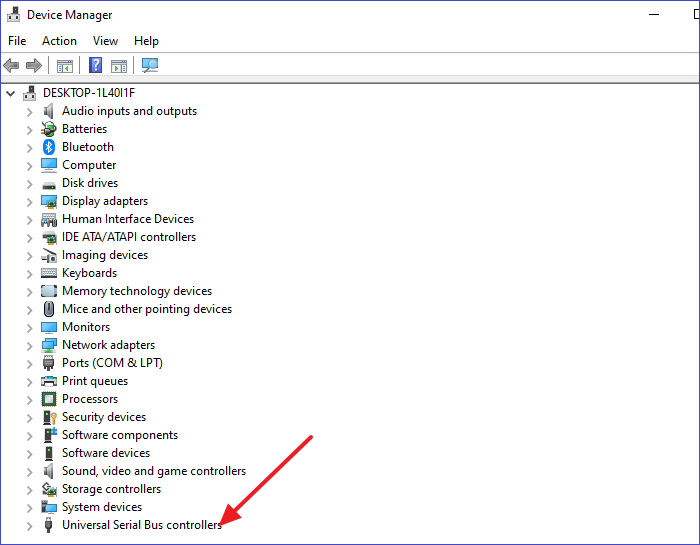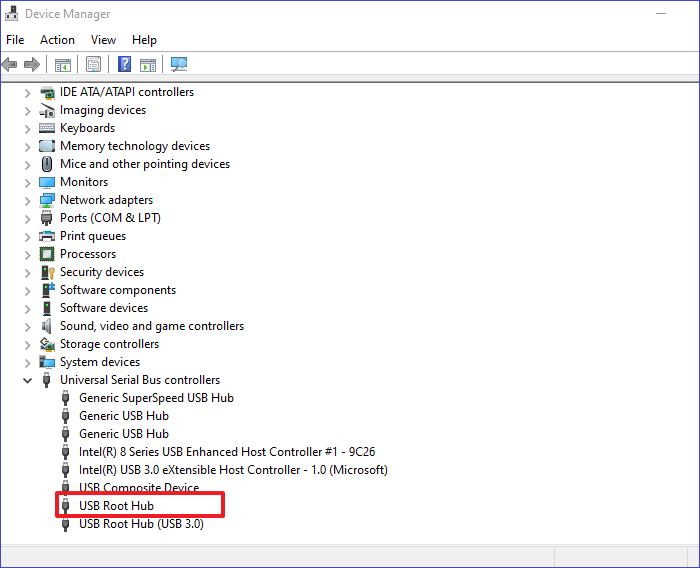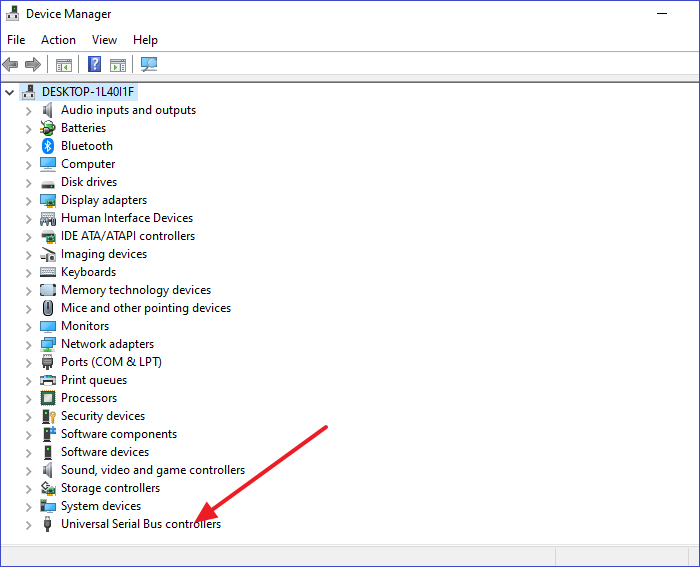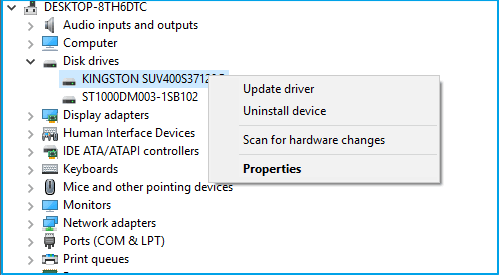How to Fix Last USB Device Malfunctioned Error on Windows [Efficient Ways]
Have you plugged a USB device into your Windows computer, and instead of opening your files, the system displays the "the last USB device malfunctioned" error message? Were you scared of what to do next? This should not worry you any further since it's common for any USB device connected to a computer to malfunction.
We'll discuss in detail the error: "The last USB device malfunctioned" and suggest five fixes to the issue. The article will also recommend using Deep Data Recovery to recover data lost after your USB device malfunctions.
About Error: The Last USB Device Malfunctioned
The last USB device malfunctioned error emerges when you try to plug a USB drive into your computer. This error message implies that the USB device you connected last to your computer misbehaved; hence your device finds it hard to detect your USB drive. Therefore, you won't be able to access the files on your USB drive since Windows will no longer read them.
Many causes exist for the "the last USB device malfunctioned" error. The first cause of this error is a damaged USB port. As a result of this factor, the ports will fail to read data from any USB device connected. Another common reason for this error is a corrupted USB drive.
Since the last device connected to your Windows computer got corrupted, this may affect all the other USB drives connected later. In the next section, we'll show you how to fix these issues and make your USB device work normally.
How to Fix the Last USB Device Malfunctioned?
The "last USB Device malfunctioned" error is not permanent and can easily be solved using various fixes. Once you've resolved the issue, you'll typically start using your USB device. The fixes that this article will discuss include to:
- Method 1. Unplug Your Computer from the Power Source
- Method 2. Change the USB Port
- Method 3. Disable USB Selective Suspend Settings
- Method 4. Repair the USB Root Hub
- Method 5. Update/Rollback a Device Driver
We'll discuss each method in the following detailed ways.
Method 1. Unplug Your Computer from the Power Source
A simple step, such as unplugging the power supply, can help solve the "last USB device malfunctioned error." This is because disconnecting the power will help the computer "forget" that error and detect your current USB upon replugging the power. Below are steps to apply this fix:
Step 1. Disconnect your PC from the power supply.
Step 2. After a short while, reconnect the power and then restart your device.
Step 3. Reconnect the USB device to your computer.
Step 4. Check to determine whether the computer can now open your USB drive. You can proceed to the second fix if this method doesn't work.
Method 2. Change the USB Port
Another solution to "the last USB device malfunctioned error" is connecting your USB drive to a different port. There is a high chance that the current USB port is not detecting the drive. If that is the problem, your computer will detect the USB drive once you connect it to a different port.
Switching to the USB ports at the back is recommended for a desktop computer since they're highly responsive, thanks to their stronger electricity power. This second fix works out the magic in most cases. However, if it still doesn't, proceed to method 3.
Method 3. Disable USB Selective Suspend Settings
You can also experience the USB device malfunction warning because of the selective suspend settings. These settings stay enabled by default on all Windows operating systems. Disabling this setting can help solve the "the last USB device malfunctioned" error. You can apply this fix through the following steps:
Step 1. Press Windows key+I to open Settings. Type power on the settings search bar and click on the first option for "Power & Sleep Settings."
Step 2. Click on "Additional Power Settings."
Step 3. Under Balanced (recommended), click on "Change plan settings."
Step 4. On the next window that opens, navigate to "Change advanced power settings."
Step 5. Double-click on "USB settings" to expand it.
Step 6. Change the setting to "Disabled" and click "OK," then "Apply." Restart your computer to effect the changes. Your USB device should now work usually.
Method 4. Repair the USB Root Hub
Another method to fix the "the last USB device malfunctioned" error is repairing the USB root hub. You can accomplish this through the following steps:
Step 1. Right-click on the Start Menu and select "Device Manager."
Step 2. Navigate to "Universal Serial Bus Controllers" and expand the section.

Step 3. Right-click on "USB Root Hub" and select "Properties."

Step 4. Under the "Power Management" tab. Click "OK" to save the changes and exit this window. Your computer should now open the USB drive.
Method 5. Update/Rollback a Device Driver
Another reason for the "the last USB device malfunctioned" error is corrupted USB drivers. A solution to this is updating the drivers or rolling back the updates. You can implement this solution using the following steps:
Step 1. Right-click on the "Start Menu" and select "Device Manager."
Step 2. Navigate to "Universal Serial Bus Controllers" and double-click on it.

Step 3. Right-click on the first USB driver and select "Uninstall device." Repeat this step for all the other USB drivers.

Step 4. Once you've completed Step 3 above, restart your computer. Upon restart, your computer will automatically reinstall the USB drivers and solve the last USB device malfunctioned error.
Tip: The Best Software to Recover Data from a Malfunctioned USB Drive
If your USB drive malfunctions, you can no longer access its data. To address this situation, we recommend using data recovery software to recover your files. The best software to recover data from a malfunctioned USB drive is Deep Data Recovery.
This software allows you to recover data lost following accidental deletion, virus attack, system crash, or partition loss. You can recover data from devices, including USB drives, memory cards, internal hard drives, SD cards, external hard drives, cameras, etc.
The main features of Deep Data Recovery include the following:
- Partition recovery- this software allows you to recover data from lost or deleted partitions on your computer hard drive.
- Raw recovery- Deep Data Recovery allows you to recover data from a hard drive even when it becomes "RAW."
- Format recovery- this software allows you to recover data from a formatted HDD, SSD, USB drive, SD card, etc.
- Damaged hard drive recovery- when your hard drive fails to respond and becomes "dead," Qiling allows you to recover all the files from it securely.
- Repair corrupted photos and videos- Deep Data Recovery allows you to repair any damaged JPEG, JPG, MP4, or MOV files during the data recovery process
If you want to freely recover data from a malfunctioned USB drive using Deep Data Recovery, download its trial version today. Below are the simple steps to use the software for data recovery.
Final Verdict
It's common to encounter the "the last USB device malfunctioned" error on Windows. This error prevents you from accessing the data on your USB drive. It mainly occurs following a damaged USB port or a corrupted USB drive. To fix the issue, you can unplug the power source, change the USB port, disable selective suspend settings, repair the USB root hub, or roll back a device driver.
If you encounter a data loss scenario on your USB drive following the USB malfunction error, the best way to recover your files is via Deep Data Recovery. This software efficiently recovers files from USB drives, SD cards, hard drives, SSDs, memory cards, etc.
If you've encountered any data loss issues, ensure you download Deep Data Recovery to recover your files.
Frequently Asked Questions (FAQs)
The common questions about the "the last USB device malfunctioned" error include the following.
1. Why Does My USB Device Keep Malfunctioning?
Your device might keep malfunctioning due to the following reasons:
- Damaged USB ports.
- Incompatible device.
- Outdated or incorrect USB drivers.
- Corrupt USB drives.
Ensure you resolve the above issues, and check whether your USB device is working as expected.
2. How Do I Open a Malfunctioned USB?
To open a malfunctioned USB drive, you'll need to fix the issue causing the error. The possible ways to fix this include to:
- Try a different USB port.
- Unplug the power supply.
- Disable USB selective suspend settings.
- Update or rollback USB drivers.
- Run a hardware troubleshooter.
3. How Do I Clear a Corrupted USB?
The best way to clear a corrupted USB is by formatting it. You can achieve this through the following steps:
Step 1. Insert the USB drive into your computer.
Step 2. Open File Explorer and click on "This PC."
Step 3. Right-click on the corrupted USB drive from the list of connected drives.
Step 4. Confirm the file system, allocation unit size, and volume label for your drive.
Step 5. Under the "Format options," check the option for "Quick format."
Step 6. Next, click the "Start" button and select "Yes" to format your USB device. The system will erase all the data on your USB drive and make it ready for another use.
Related Articles
- Windows Solution: Can't Create Restore Point Windows 10
- How to Solve Samsung Smart TV USB Not Working [Updated 2023]
- [Solved!] Your Device Is Missing Important Security and Quality Fixes
- How to Dual Boot macOS Ventura and Monterey on a Mac [Add New Volumes]